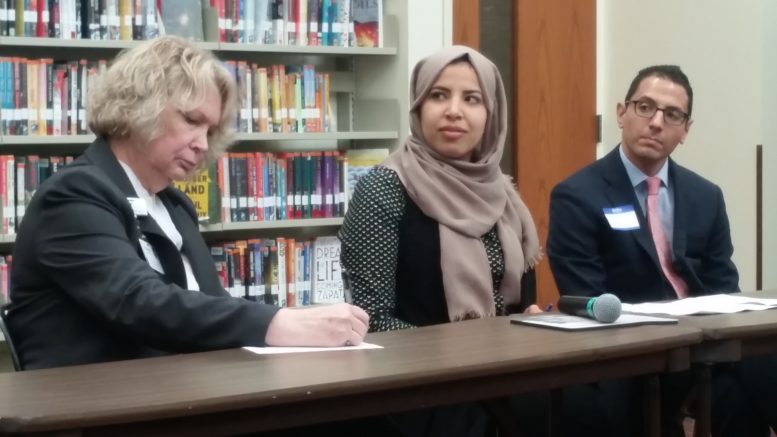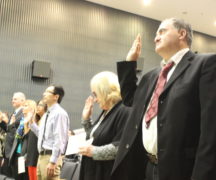By JAN LARSON McLAUGHLIN
BG Independent News
To those who wonder why undocumented immigrants don’t just wait their turn to get into the U.S., Eugenio Mollo Jr. has an answer.
It can take 20 years of waiting – and that’s for the lucky ones.
“It’s not that easy,” Mollo said Thursday evening during a program on immigration sponsored by LaConexion’s Immigrant Solidarity Committee.
The U.S. is operating under immigration law that was adopted in 1952. Prior to then, the law was updated every seven to 12 years.
“Now we’ve gone 65 years without any comprehensive immigration reform,” said Mollo, an attorney with Advocates for Basic Legal Equality.
Meanwhile, the U.S. now has up to 12 million undocumented immigrants.
The nation allows 226,000 Visas to be issued a year, based on family connections, employers who need particular expertise, or due to humanitarian issues. The antiquated system, Mollo said, permits no more than 7 percent of those Visas to go to immigrants of a particular nation. That is a problem for India, China, Mexico and the Philippines, he said.
To explain the current system, Mollo used the example of a U.S. citizen having two siblings who wanted a Visa. The sibling from Uganda would have to wait 13 years from when they first applied. The sibling from Mexico would wait at least 19 years.
The wait time is likely much longer now. “So many people have applied,” Mollo said.
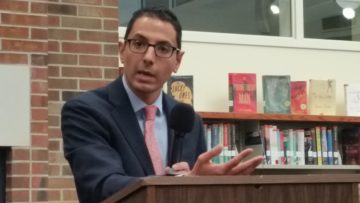
Eugenio Mollo Jr., with ABLE, talks about immigration.
“My job is to help these people climb this immigration ladder,” he said. But the climb is difficult, especially with the federal government toughening standards and considering ending some options for refugees.
Adding to the fear and frustration for those seeking to immigrate to the U.S. and those already here, are the rapidly changing rules being pushed by the President Donald Trump administration. There are plans for a border wall, more deportations, the proposed travel ban and now the possible end to the DACA program.
Since Trump became president, the number of Immigration and Customs Enforcement officers has more than doubled and the scope on deportations has expanded. Under the presidency of Barack Obama, deportations focused on undocumented immigrants who posed a risk to national security and public safety. But now all undocumented immigrants are subject to deportation, with no prioritization, Mollo said.
“We’ve seen ICE go to homes and workplaces to arrest people. What national interest does that advance when we remove hard working parents or children,” he asked.
In response to those deportations, ABLE has created a family preparation guide for families with undocumented members.
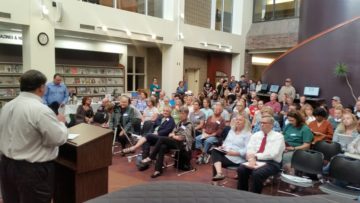
Wood County District Public Library Director Michael Penrod welcomes crowd to immigration program.
The fears were magnified last week, when U.S. Attorney General Jeff Sessions announced the end to the DACA program. The Deferred Action for Childhood Arrivals, enacted by Obama in 2012, gave protected status to immigrant children who came here before age 16, had earned their high school diplomas, and passed background checks.
The issue is far from resolved, with Trump giving mixed signals about the future of the DACA program. However, those people currently in the DACA program must file for renewal by Oct. 5, 2017 – even if their previous renewal dates are months away. They must also pay a fee of $495 – which they may have difficulty raising in that short period, Mollo said.
“A lot of communities are raising funds for those who don’t have the funds,” he said. And ABLE is offering free workshops for people who need help renewing their applications.
As of Thursday morning, there were some signals that Trump was putting pressure on Congress to pass the Dream Act, which would offer a road to citizenship for those in DACA who have graduated high school, attend college, enter the workforce or enlist in the military.
But it was only weeks ago when Trump’s former chief strategist Steve Bannon was pushing for the end to the DACA program, suggesting that the 800,000 in the program would then all self-deport. Not likely, Mollo said.
“Cutting off their status just throws them back into the shadows,” he said.
Mollo encouraged citizens at Thursday’s program to write their congressional members to thank them for supporting DACA, or to urge them to do so.
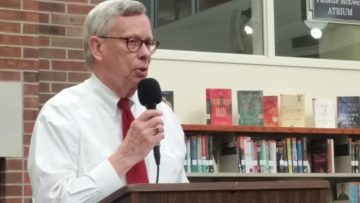
Mayor Dick Edwards talks about Bowling Green’s “welcoming resolution.”
Bowling Green Mayor Dick Edwards read aloud the letter he had already sent, expressing the threat that ending DACA posed for some BGSU students. He also talked about the city’s adoption of a “welcoming” resolution, saying that the vast majority of Americans “all just got off the boat,” from somewhere.
Bowling Green City Council member Bruce Jeffers said a welcoming stance is good for the community and its economy.
“Our businesses and industries are hurting for high quality employees,” he said.
Jeffers also added, “We don’t want people to be deported for stupid reasons.”
Waffa Aburahma, a recent BGSU graduate in international studies, talked about the financial and cultural benefits brought to Bowling Green by the more than 1,500 international students at BGSU.
Deb Chatfield, of Wood County Hospital, talked about the challenges of recruiting physicians to smaller communities. She said the process for getting physicians from other nations can be very difficult.

